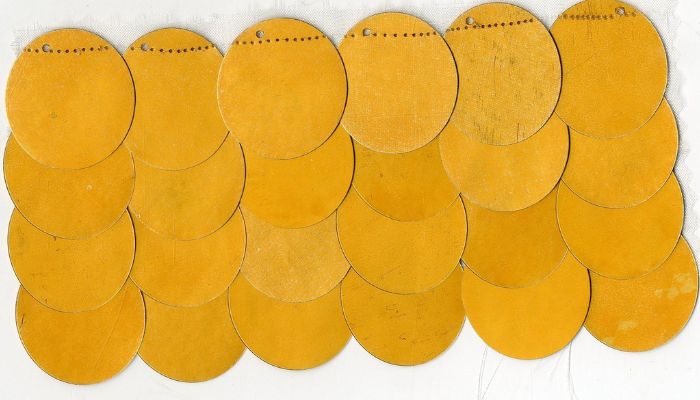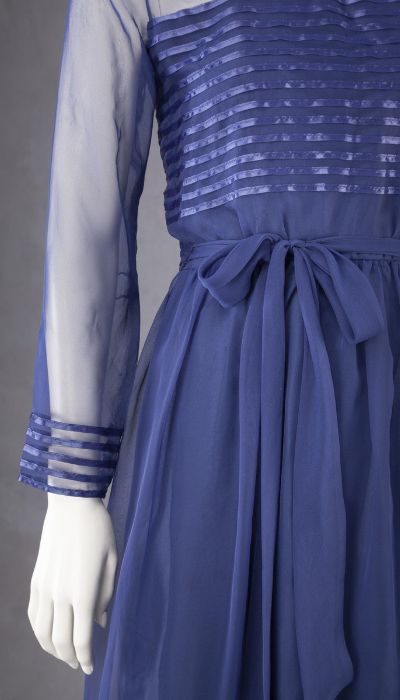Organza fabric, known for its lightweight, sheer quality and plain weave, has a rich history and a variety of uses in both fashion and home decor.
| Fiber Source | Originally silk; now also includes polyester and nylon |
| Weaving Patterns | Plain weave with tightly twisted yarns |
| Dominant Colors | Various, known for shimmer and sheen |
| Texture Spectrum | Sheer, lightweight, with a stiff and structured drape |
| Breathability Index | High due to its sheer nature |
| Strength & Longevity | Delicate, prone to frays and tears, especially in silk forms |
| Maintenance Needs | Requires gentle handling, often dry-clean only |
| Primary Applications | Wedding dresses, evening wear, overlays, home decor |
| Ecological Impact | Silk is more sustainable; synthetics have a higher impact |
| Major Exporters | Silk predominantly from China and India; synthetics globally |
| Comparable Fabrics | Chiffon, Tulle, Georgette |
1. Composition and Production
Traditionally, organza was primarily made from silk fibers, particularly produced in China and India. Modern advancements have introduced synthetic fibers like polyester and nylon into the production of organza, offering increased durability and reduced fraying compared to silk organza.
Research highlights organza’s suitability for wearable antennas, with studies showing how its unique properties, such as low-light and flabby texture, make it ideal for flexible substrates in advanced electronic applications
The major producers of silk organza are China and India, with significant production in the Yangtze River region and Zhejiang province in China, and in Bangalore, India. For synthetic organza, China leads in production due to its large textile industry.
2. Types and Variations
Organza comes in various forms, including:
- Crystal Organza: Known for its shine and crisp texture.
- Silk Organza: Luxurious, with a smooth texture and natural sheen.
- Polyester Organza: An affordable alternative to silk, mimicking its appearance and texture.
- Embroidered Organza: Features intricate embroidery designs, adding luxury and elegance.
- Printed Organza: Boasts patterns and motifs through printing, allowing for customization.
Fabrics similar to organza include tulle and chiffon, both known for their sheer and lightweight properties, but with distinct textures and uses.
3. Applications and Uses
Organza’s versatility makes it a popular choice in various applications:
- Fashion: Used in wedding gowns, evening wear, blouses, tops, and costumes, organza adds an element of elegance and volume.
- Home Decor: Employed in curtains, tablecloths, and other decorative items, it creates a light and airy ambiance.
These are burnished gold sequins made with gold sequins and organza.
Research on kale cultivation using organza fabric shows its effectiveness in improving crop yield and pest management, demonstrating organza’s diverse applications beyond fashion and decor.
This is a navy blue dress with sheer bodice yoke, long sleeves and at skirt hem, made with synthetic organza.
And use of organza fabric in tomato cultivation shows significant reduction in pest damage and increase in fruit yield, highlighting its application in agriculture.
4. Environmental Impact
The environmental impact of organza varies depending on the material used. Silk organza is generally more environmentally sustainable, while synthetic versions like nylon and polyester organza have a more significant negative environmental impact, being derived from non-renewable petroleum oil.
A study on nitrogen-doped TiO2/C nanofibrous film on organza underscores its potential in environmental applications, such as water purification, by enhancing photocatalytic activity.
5. Textural and Physical Properties
Organza is known for its crisp, slightly stiff texture due to the acid treatment of the yarns before weaving. It’s thin, transparent, and reflects light well, creating a shimmering effect. A study investigating sewing thread sizes on organza reveals how different thread sizes impact the fabric’s tensile strength.
Organza fabric is highly breathable, attributed to the small holes created in its weave, making it a good choice for summer clothing.
6. Cost Consideration
The cost of organza varies. Silk organza tends to be more expensive due to the labor-intensive nature of silk production. In contrast, polyester and nylon organza are more affordable.
7. Conclusion
Organza fabric, with its delicate appearance, broad range of types, and versatility in use, remains a popular choice in fashion and home decor. Whether opting for the luxurious silk organza or the more accessible synthetic versions, it offers a unique combination of sheerness, lightness, and structural ability to enhance any design.


